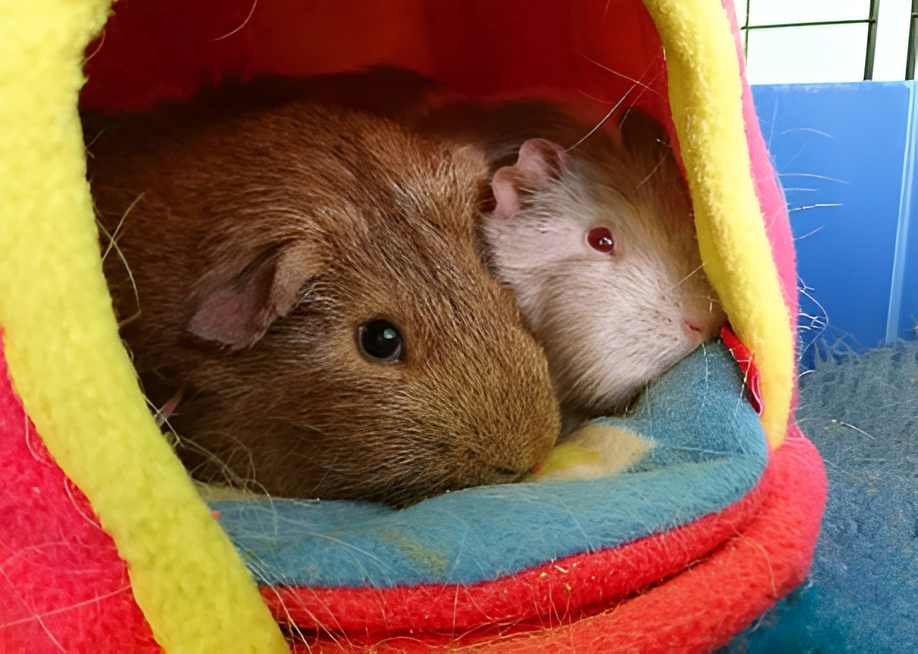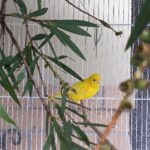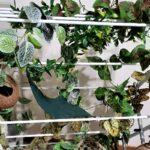Rats and Mice
Enrichment is about providing activities for your animals that will alleviate boredom and recreate activities normally undertaken in the wild. Most captive rats and mice live a charmed life where food is given to them on a plate where no effort is required. Often this results in overweight, lazy animals that may pick fights with other cage mates for their choice of the best foods. Environmental enrichment provides mental and physical stimulation to avoid behavioural problems and increase an animal’s health and fitness. There are many toys available for purchase to fulfill these needs, though many can be created from household items and are limited only by your imagination.
Always apply common sense when finding toys for your pets, keeping in mind that they might swallow portions of the toy, or could even become entangled, trapped or injured.
Chew Toys
Rats and mice are natural chewers and will enjoy objects that are tough enough to withstand a good munching. Toys include:
- Raw nuts in the shell. Avoid fatty nuts such as peanuts, aim for nuts like almonds, walnuts and pistachios.
- Hard, low fat dog biscuits are ideal.
- Rats may enjoy rawhide treats, liver treats or even pig ears.
- Wooden toys or rodent chew blocks
Climbing Toys
Rats and mice love to climb and adding climbing toys allows them to use vertical areas of the cage.
- Buy some thick rope and tie knots along the length. Tie this to the roof, or use as a ladder between levels.
- Ladders designed for birds are ideal
- Add natural tree branches and rocks for your animals to climb over and chew.
- Make a hammock out of an old face washer or sock and string up in a corner of the cage.
- Create your own ladder or ramp at home out of paddle pop sticks.
Foraging toys
Rats and mice in the wild have to search for their food, spending hours each day foraging, digging and climbing. By recreating this at home you will prevent boredom, fights over food and obesity.
- Fill a shallow container with water and throw in a few frozen peas or corn kernels. Watch the critters dive for their special treat – great in summer.
- For very clever animals, submerge small smooth river stones in the water and hide the treats amongst these.
- Fill a shallow container with new, fertiliser free potting mix and scatter bird seed across the top. Wait for the seeds to sprout before adding the container to the animal’s cage (you may want to avoid watering the seedlings for a day before placing in the cage to avoid muddy critters).
- Collect pine cones and freeze them overnight (to kill off bugs and diseases). Trickle honey into the creases and then stuff with treats such as seed, kibble, peas, corn etc.
- Twist sheets of paper into a bon-bon and place your rodent’s favourite treat in the middle.
- Using thick thread and a sewing needle, create strings of treats for your critter. Use long life treats such as popcorn, seed and sultanas. Do not loop the thread as this may create a strangulation hazard.
- Using paper towel, make a piñata for your pet with treats between layers of paper. Hang from the roof of the cage.
Hidey Holes
Hidey holes and shelters allow your rat to explore, nest and feel secure from predators.
- Rats and mice love hiding in and chewing toilet paper rolls.
- Give your critters an empty or almost empty tissue box to play in. They love shredding tissues to make a soft bed.
- Create a fabric rat tunnel. Cut the toe off an old sock. Cut a 600ml bottle into plastic rings and fasten these to the entry and exit of the tunnel to hold it open.


Guinea Pigs
Behavioural enrichment aims to enhance the quality of life of captive animals. Providing varied, challenging and stimulating environments will improve the mental and physical well-being of pet guinea pigs, which in turn should assist in preventing or reducing abnormal behaviours often associated with captivity.

Photograph curtesy of “Alittlebitiffy Animal Sanctuary”
Suitable enrichment ideas can be acquired by researching the behaviours of wild guinea pigs and mimicking or adapting these for pets in a captive environment. As prey animals, guinea pigs spend a lot of their time hiding. They will do best and feel most secure when provided with multiple areas to hide in. Providing excess hay is also good, not only from a dietary perspective, but allows for Guinea pigs to burrow and manipulate their environment.

Photographs curtesy of “Alittlebitiffy Animal Sanctuary”
Guinea pigs are social animals and do best in pairs or small groups. They are also what is known as as thigmotactic, which means they feel safer when they can push their body against another guinea pig. For guinea pigs housed individually, this can be mimicked by provided a rolled up towel, or a wombat/guinea pig shaped soft toy inside a hide for them to press up against.
Opportunities for burrowing and foraging should also be provided. Economical foraging toys can also be made from inexpensive household objects such as newspapers, cardboard packaging, egg cartons, paper towels and toilet rolls.

Fill these objects with desirable, high-value treats and present to pet guinea pigs. The object is to encourage the piggy to open, chew and destroy these foraging toys in order to get to the treats inside. Inexperienced piggies should be introduced to these foraging opportunities slowly and initially might need to be shown that there are treats to be obtained by ripping open the foraging toy for them. Eventually these toys can be made more complicated and challenging in order to keep them entertained for longer.
Daily offerings of vegetables and fruits can also be utilised as enrichment opportunities. Try to avoid providing a standard plate of perfectly chopped up produce each day as this does not offer any challenges and will quickly become boring.

Instead try to find novel ways to provide these foods. This can include hanging fruits and vegetables on stainless steel skewers or pegs, providing it in its whole form so that the piggy has to chew through the skin and seeds to get to the flesh, or even utilising and combining bits and pieces from various fruits and vegetables together such as wrapping treats in corn husks.

Photographs curtesy of “Alittlebitiffy Animal Sanctuary”
A large range of commercial foraging toys are also available. These often come in a variety of shapes, sizes and various levels of difficulty. Have an assortment of these toys available so that they can be rotated in and out of the cage often. This will help prevent the piggy from becoming completely familiar with the toy and solving it too easily. Guinea pigs might need to be shown how to solve the foraging toy initially before being able to do so themselves.

Commercial foraging toys range in difficulty from very easy to very challenging.
Destructible commercial toys are also a great source of enrichment. Wood, paper and safe plant based toys (such as ones made of dried palm leaves, coconut fibers, hay, corn cobs, pinecones and bamboo) are designed to be destroyed and should be replaced often.
Less destructible toys can also contribute to a good enrichment regime. These toys include ones made out of strong plastics, stainless steel and hard woods. Toys of this nature should be rotated in and out of the cage very often to avoid boredom.
Foraging trays are also ideal and can be filled with a large assortment of treats. Once the piggy has become more comfortable with the idea of foraging for food in a tray then the difficulty level can be ramped up by hiding the treats amongst non-toxic paper cat litter pellets, shredded paper and scrunched up newspaper sheets.

Supervised outdoor time can also be provided as nutritional and environmental enrichment. Offering guinea pigs time out in natural sunlight and with the opportunity to forage on natural pesticide-free grass will keep them busy for quite some time.
Enrichment is an exceptionally important aspect when it comes to owning guinea pigs. Guinea pig owners can ensure their pets are enjoying a fulfilling and enjoyable life by incorporating a quality and varied enrichment regime.




